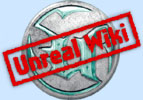ParticleEmitter/Location
Properties in the Location Group set the shape and dimensions of the the 3D volume in space where where particles will spawn. They may move out of this once they have been spawned: for this see the ParticleEmitter/Velocity? and ParticleEmitter/Acceleration? groups.
All co-ordinates entered here are subject to the ParticleEmitter/General? → CoordinateSystem property, which determines whether they are relative to the world or the Emitter actor, for example.
Furthermore, there are four ways to specify location: as a box, as a sphere, in spherical polar co-ordinates, or with a static mesh in the MeshSpawning properties group.
- int AddLocationFromOtherEmitter
- You can specify another ParticleEmitter's index within the containing Emitter actor's Emitters array to spawn particles relative to that other emitter's particle locations. This lets you do fairly advanced things such as trails on other particles.
- range SphereRadiusRange
- Used when StartLocationShape is "Sphere". Particles will spawn any distance between the min and max from the center of the emitter. If both max and min are the same, particles will spawn all along the outside of a sphere with this radius.
- vector StartLocationOffset
- Offset from the origin of the ParticleEmitter's coordinate system. The type of coordinate system is selected under General → CoordinateSystem.
- rangevector StartLocationPolarRange
- Used when StartLocationShape is "Polar". StartLocationPolarRange specifies spherical polar coordinates.
- X
- The theta component. This is the angle around the Z axis in the XY plane, ie the longitude. Measured in RUU, so a full circle is 65536. 0 is on the positive x-axis, and the angle is measured round in a clockwise direction looking from the top.
- Y
- The phi component. This is the angle down from the upward Z axis. This is sort of the latitude, except that in geography, the equator is 0 and the poles 90. Here, 0 is the "North Pole", 16384 RUU is the equator (90 degrees) and 32768 (180 degrees) is the "South Pole".
- Z
- The radius.
- rangevector StartLocationRange
- Used when StartLocationShape is "Box". See DM-Oceanic for a good example: for a line of bubbles, just set one co-ordinate, eg X: -64, 64. For a plane surface of bubbles, set two. The rotation of the enclosing Emitter actor orients this domain.
- EParticleStartLocationShape StartLocationShape
- Specifies the type of coordinate system used by the particle emitter. This determines which of the above numeric properties is used.
- PTLS_Box
- StartLocationRange will be used to specify a box shape.
- PTLS_Sphere
- SphereRadiusRange will be used to specify a sphere.
- PTLS_Polar
- StartLocationPolarRange will be used to describe the spawning area with a range of polar coordinates.
- PTLS_All
- Combines all of the above. The StartLocationRange will determine the initial location, then the SphereRadiusRange will be added to that, then the StartLocationPolarRange will be added to the result to get the final starting location.
See also ParticleEmitter/Enums.
